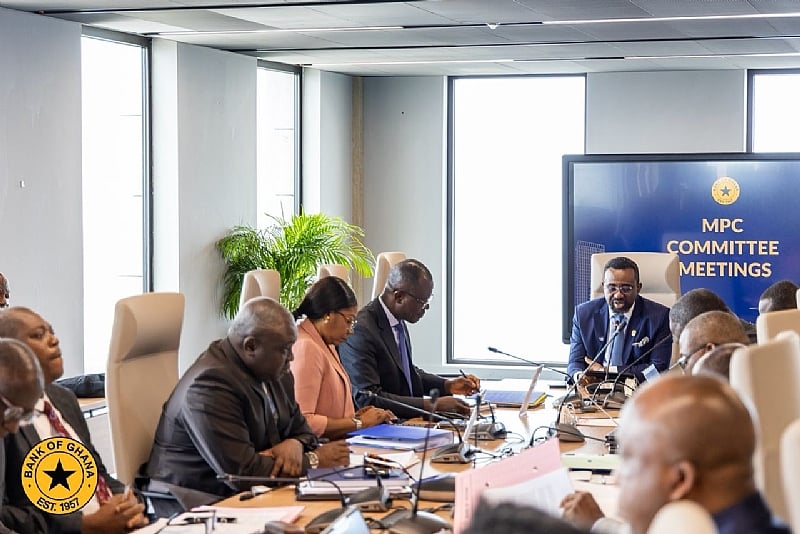Paragraph 1: Introduction – Ghana’s Inflation Trajectory and Central Bank’s Projections
Ghana’s economy has witnessed a sustained period of disinflation, with headline inflation steadily declining for eight consecutive months. The Bank of Ghana (BoG), the country’s central bank, projects this downward trend to persist, forecasting inflation to fall within its medium-term target band of 6% to 10% by the end of 2025. This positive outlook signals potential relief for consumers and businesses burdened by rising prices. The central bank’s confidence in achieving this target stems from observed disinflationary pressures and the implementation of supportive monetary policies. However, potential challenges, such as upward revisions to utility tariffs, could exert countervailing price pressures in the medium term.
Paragraph 2: Monetary Policy Response and the Path to Disinflation
In its pursuit of price stability, the Bank of Ghana has adopted a proactive monetary policy stance. At its 126th Monetary Policy Committee (MPC) meeting, the Bank decided to reduce the Monetary Policy Rate (MPR) by 350 basis points, lowering it from 25% to 21.5%. This substantial reduction signals a shift towards a more accommodative monetary policy stance aimed at stimulating economic activity while carefully managing inflationary pressures. The decision, taken by a majority vote within the MPC, underscores the Bank’s commitment to reinforcing the disinflation process. While the rate cut aims to stimulate economic growth, the Bank remains vigilant about potential inflationary risks and has emphasized its commitment to closely monitor economic developments and adjust its policy stance if necessary.
Paragraph 3: Factors Contributing to the Disinflationary Trend
Several factors contribute to Ghana’s disinflationary trajectory. The Bank of Ghana’s firm monetary policy stance, characterized by previous interest rate hikes and other measures, has helped curb inflationary pressures. Strong sterilization efforts by the central bank have also played a crucial role in managing liquidity and controlling inflation. Fiscal consolidation measures implemented by the government, aimed at reducing the budget deficit and promoting fiscal discipline, have further supported the disinflationary trend. Additionally, adequate reserve buffers provide the economy with a cushion against external shocks and contribute to overall macroeconomic stability. The confluence of these factors has created a favorable environment for sustained disinflation.
Paragraph 4: Potential Challenges and Risks to the Inflation Outlook
While the Bank of Ghana maintains a positive outlook for inflation, certain risks and challenges could potentially impede the disinflationary process. A significant concern is the possibility of upward revisions to utility tariffs. Increases in electricity, water, and other essential services could directly impact consumer prices and exert upward pressure on inflation. The central bank acknowledges this potential challenge and factors it into its medium-term inflation projections. External factors, such as fluctuations in global commodity prices and exchange rate volatility, could also influence domestic inflation dynamics. Moreover, unforeseen domestic economic developments or policy changes could introduce uncertainties into the inflation outlook.
Paragraph 5: The Bank of Ghana’s Vigilance and Commitment to Price Stability
The Bank of Ghana remains committed to its mandate of maintaining price stability and achieving its medium-term inflation target. The MPC has emphasized its commitment to closely monitor economic developments and indicators, both domestic and international. This vigilance allows the central bank to proactively assess potential risks and adjust its policy stance as needed to safeguard the disinflationary process. The Bank recognizes that achieving and sustaining price stability requires ongoing vigilance and a proactive approach to policymaking in a dynamic economic environment.
Paragraph 6: Conclusion – Balancing Growth and Price Stability
The Bank of Ghana’s efforts to balance economic growth and price stability are evident in its recent policy decisions and projections. The reduction in the MPR signals a move towards supporting economic activity while the continued emphasis on disinflation underscores the Bank’s commitment to price stability. The central bank’s proactive approach to monetary policy, complemented by fiscal consolidation efforts and adequate reserve buffers, positions Ghana’s economy for sustained disinflation and a return to the medium-term inflation target range. However, potential challenges, such as utility tariff adjustments, warrant careful monitoring and may require further policy adjustments to ensure the disinflationary trend remains on track.


